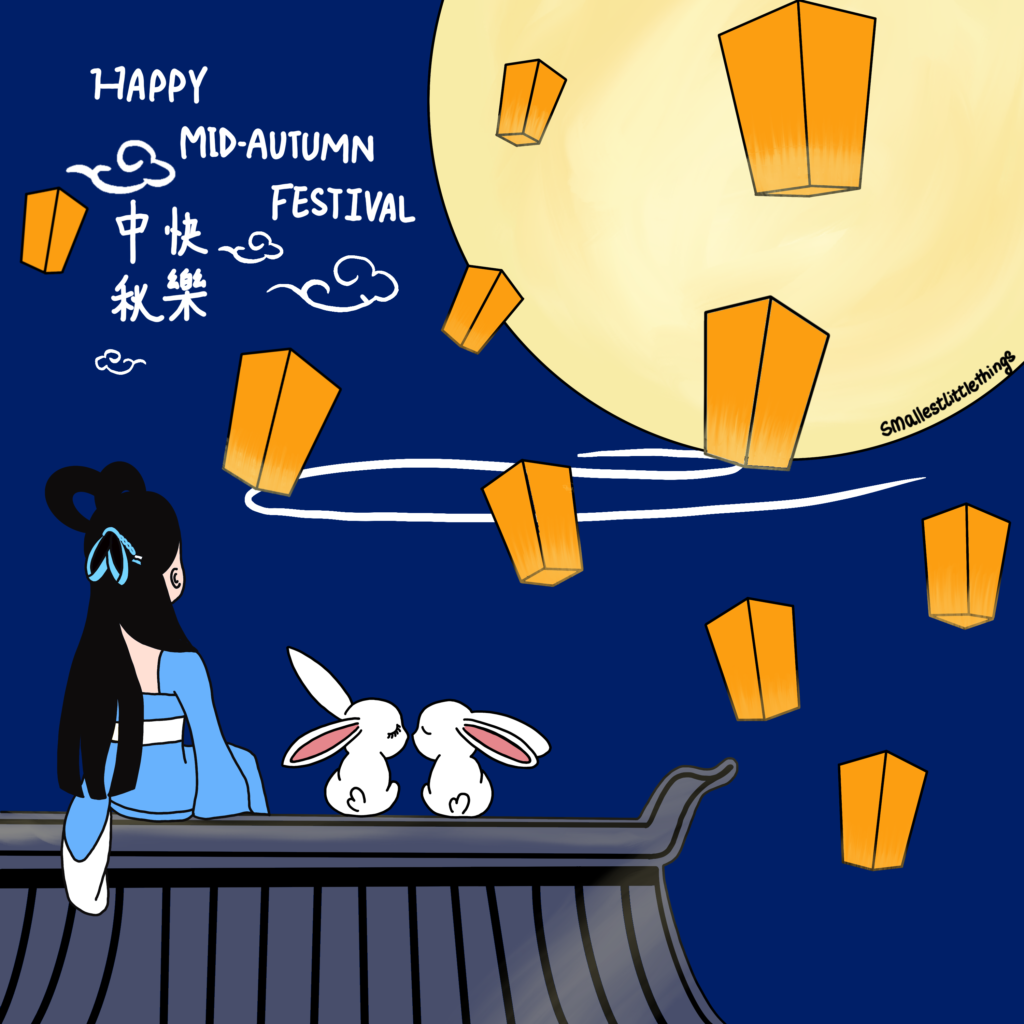
When you think of Taiwan’s Mid-Autumn Festival, what comes to mind? Lanterns? Mooncakes? Well, not quite. For most people in Taiwan, it’s all about the barbecue. Yes, that’s right—grilling has become one of the most iconic activities during this festival. But here’s the thing—it’s not some long-standing tradition. In fact, it only really kicked off in 1986!
The story goes that this trend started thanks to an ad campaign by Wan Ja Shan Soy Sauce, which launched a barbecue sauce with the catchy slogan: “A family’s barbecue, fragrances the whole neighbourhood.” That’s how the whole barbecue craze took off during Mid-Autumn Festival.
Here’s the ad if you fancy a watch.
Apparently, this ad was so well-received that it soon became an indispensable part of celebrating Mid-Autumn Festival in Taiwan. Families and friends gather around balconies, parks, or any open space to fire up the grill, sharing food and good times. It’s a proper “new tradition” for many in Taiwan.
Traditionally, you’d expect to see kids with lanterns around Mid-Autumn Festival, but that’s not really the case here anymore. While lanterns still make an appearance during other festivals, like Ghost Month or Lantern Festival, the spotlight during Mid-Autumn seems to have shifted to barbecues. I remember being back in Hong Kong for Mid-Autumn once, and I was a bit baffled when I saw lantern riddles on the streets. I thought, “Why are they still doing that?” Clearly, I’d forgotten that the stars of the show were meant to be lanterns and mooncakes, not grills and pomelos!
Taiwan’s Mooncakes – What’s the Craze?
Of course, no Mid-Autumn Festival is complete without mooncakes. And in Taiwan, there’s a wide variety. I’ll admit, I’m not the biggest fan of them, but I’ve done a bit of research.
What’s interesting is that in Hong Kong, I usually get the newer, more creative versions of mooncakes. But in Taiwan, it’s more about the traditional ones—Cantonese-style and Suzhou-style mooncakes are still going strong here.
Even though modern twists on mooncakes are getting more popular, you’ll still find the classics everywhere: lotus seed paste, red bean, salted egg yolk, jujube, mixed nuts, and even black bean paste. They’ve got it all.
For me, though, Suzhou-style mooncakes really stand out. I just love that flaky, multi-layered pastry, and so do many people in Taiwan, especially in the central and southern regions. Fillings can include green bean, red bean, jujube, or meat—perfect if you enjoy a crisp bite.
And let’s not forget the innovative mooncakes that pop up each year—bird’s nest, mullet roe, pineapple…you name it. There’s no shortage of choices. But for my Hong Kong palate, Taiwan’s mooncakes just don’t hit the spot. I’d pick a Hong Kong ice skin mooncake any day!
The Pomelo – Taiwan’s Other Mid-Autumn Star
Aside from mooncakes, the pomelo is another key part of Taiwan’s Mid-Autumn Festival. It’s a type of grapefruit, and in the lead-up to the festival, markets are full of them. Not only is it a seasonal fruit, but it also carries special symbolic meaning here.
In Taiwanese, the word for pomelo sounds like “protecting the child,” so it’s considered a symbol of safety and blessings for children. It’s common for parents to cut the pomelo in half and place the peel on their child’s head, symbolising a wish for health and growth. Every year, social media fills up with cute pictures of kids (and even pets!) with pomelo peel hats.
In a Nutshell
Taiwan’s Mid-Autumn Festival is a blend of the old and the new. While traditional cultural elements remain, modern customs have taken root too. Barbecuing has become a symbol of family gatherings, mooncakes showcase the diversity of Taiwanese food culture, and pomelos convey heartfelt blessings. Together, they reflect the Taiwanese love for life and family. Whether it’s the bright moon in the sky or the delicious food on the table, this festival brings a sense of warmth and togetherness. So, if you ever find yourself in Taiwan during Mid-Autumn, be sure to check out the barbecues. It’s a sight worth seeing!
台灣中秋節的特色不是燈籠、不是月餅而是烤肉
提到台灣的中秋節,大部分當地人第一個聯想到的絕不是傳統的燈籠、燈謎、月餅,而是烤肉。烤肉大概已經成為台灣中秋節最具代表性的活動之一。而大家知道嗎?這個可不是一個歷史悠久的傳統,至少他是從1986年之後才興起的活動。
關於中秋節烤肉習俗的起源,普遍的說法是與萬家香醬油廠推出烤肉醬廣告有關。1986年,萬家香醬油廠推出烤肉醬,廣告裡面「一家烤肉萬家香」這句台詞掀起了中秋節烤肉的風潮。就是這個~~~
據說這廣告深受台灣民眾的喜愛,隨後成為中秋節中不可或缺的一部分。不論是在家中的陽台,還是到公園、戶外空地,家人朋友聚在一起,架起烤肉架,享受美食與團聚的時光,這已經成為許多台灣人過中秋的「新傳統」。
與傳統文化不同的是,現在中秋節在台灣已經很少會看到孩子玩燈籠。雖然燈籠在農曆七月普渡或元宵節時仍有它的象徵意義,但中秋節的主角似乎已經被「烤肉」搶走了。上次我中秋節回香港,突然看到街上中秋節有燈謎活動還很困惑Why?漸漸的我已經忘記,中秋節的主角應該是燈籠跟月餅,而不是烤肉跟文旦。
台灣的月餅種類與特色
中秋節的另一個相當重要元素當然就是月餅。在台灣,月餅的種類真的蠻多的。雖然我不太愛吃XD,但還是小有研究。
就我的觀察,我覺得蠻有趣的是在香港我通常收到的都不會是傳統月餅,而是新一代的創新月餅。但是,反觀在台灣,我收到蠻多都是傳統的廣式月餅和蘇式月餅。
雖然說但近年來,越來越多新型態的月餅也廣受歡迎,但在商場裡,傳統的廣式月餅和蘇式月餅都還是市場上的主流。口味也是應有盡有:蓮蓉、豆沙、蛋黃、棗泥、核桃、伍仁、松子、烏豆沙、蛋黃等。
就我個人而言,更能突顯台灣月餅的特色的是蘇式月餅。好愛好愛那外面的酥皮和多層次的口感。這種月餅在台灣同樣擁有眾多愛好者,尤其是在台灣的中部與南部。餡料部分,有綠豆、紅豆、棗泥、肉餡等,特別適合喜歡酥脆口感的人。
除了這些傳統的以外,每年還有各種創新類的的月餅。頂級燕窩月餅、頂級烏魚子月餅、金鑽鳳梨口味的月餅、X.O醬烏魚子。反正,你要買月餅,絕對沒有你買不到的。
只是,不管是哪一種,對於擁有香港胃的我,台灣的月餅還真不是我的最愛。如果我要選,我還是更愛香港的冰皮月餅。
中秋節的文旦
除了月餅之外,文旦也是台灣中秋節的一大象徵。文旦其實就是柚子。每到中秋節前夕,文旦就會在市場上大量出現,除了因為它是當季的水果,更因為文旦在台灣有著特殊的象徵意義。
原來文旦在台語中與「佑子」(保佑孩子)諧音相同,因此文旦在台灣具有象徵保佑平安、幸福的含義。所以,很多台灣家長會在中秋節時,將柚子剖開,讓孩子們戴在頭上,象徵著保佑孩子健康、平安成長。每到中秋節就,社交媒體上就會出現一堆孩子們頂著柚子皮的照片跟影片。甚至還會有人把他載在寵物的頭上
結語
如果有機會中秋節來台灣的話,一定要到街上看看,烤肉的景象我個人覺得相當的特別。在台灣的中秋節既保留了傳統文化中的象徵意義,也融入了現代的生活方式與習俗。烤肉成為了家庭團聚的象徵,月餅承載著台灣多元的飲食文化,而柚子則傳遞了對孩子平安健康的祝福。這些習俗反映了台灣人對於生活的熱愛與對家庭的重視。